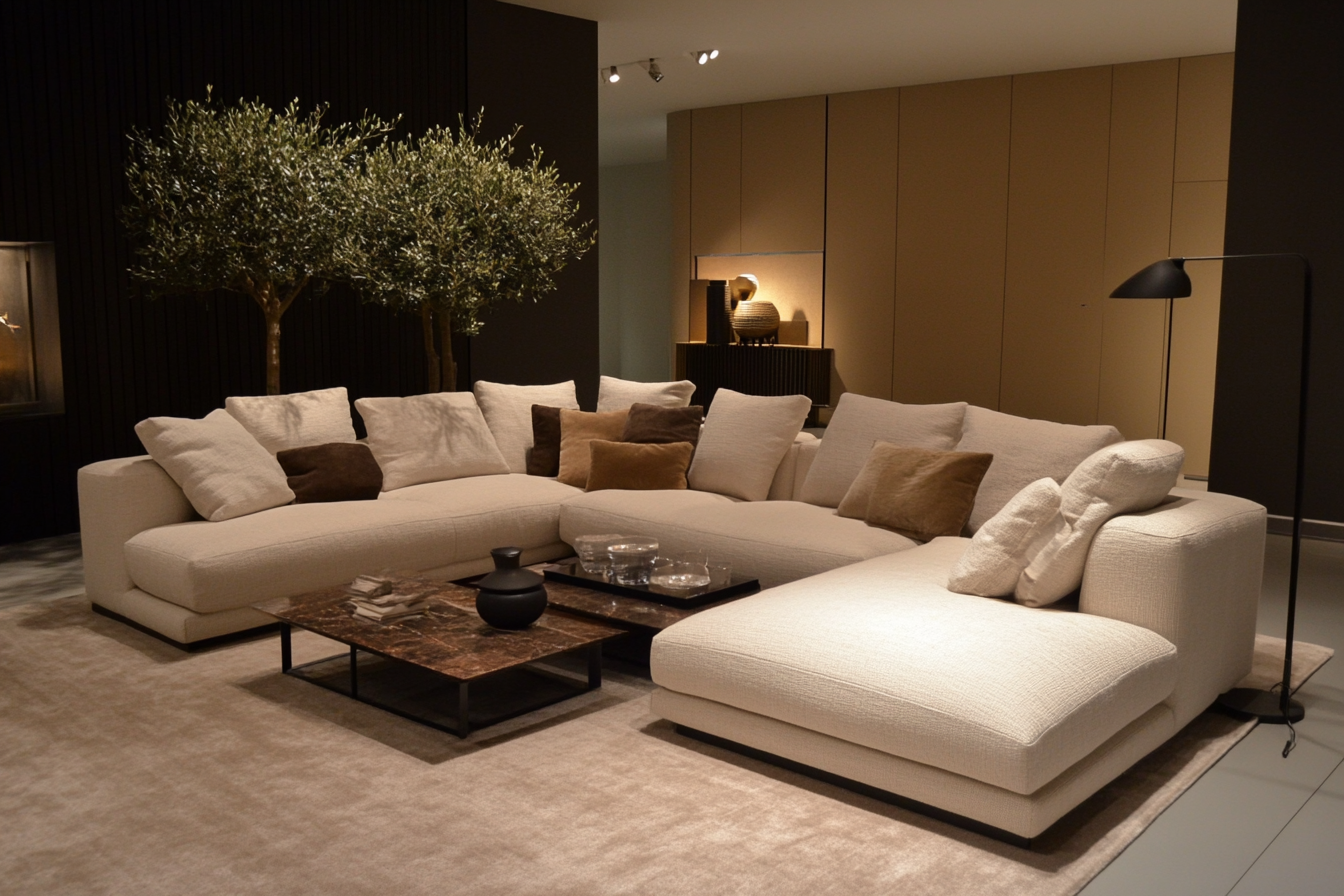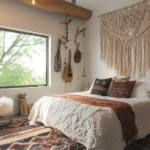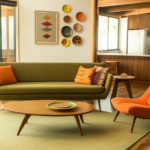The minimalist living room trend has become increasingly popular—and it’s easy to understand why. It’s all about creating a space that feels open, calming, and organized while still being stylish and functional. Whether you’re redesigning your current living room or starting fresh, these minimalist ideas will help you achieve a serene, modern atmosphere.
Minimalism isn’t about sacrificing style for simplicity; it’s about choosing the right furniture, colors, and accessories that make the space feel more organized. Keep reading for 21 minimalist living room ideas that will transform your space into a relaxing retreat.
1. Keep It Simple with Neutral Colors
Neutral colors are the foundation of minimalist design. Shades like white, beige, and gray create a peaceful backdrop that makes the space feel larger and more open.
Choosing soft, neutral tones for your walls, furniture, and decor allows you to keep the room feeling fresh without overwhelming it with bold colors. You can still add contrast by using different shades of neutrals, such as pairing a light beige sofa with darker gray cushions.
The simplicity of neutral tones enhances the minimalist aesthetic by keeping everything balanced and calm, while also allowing other elements of the room to stand out.
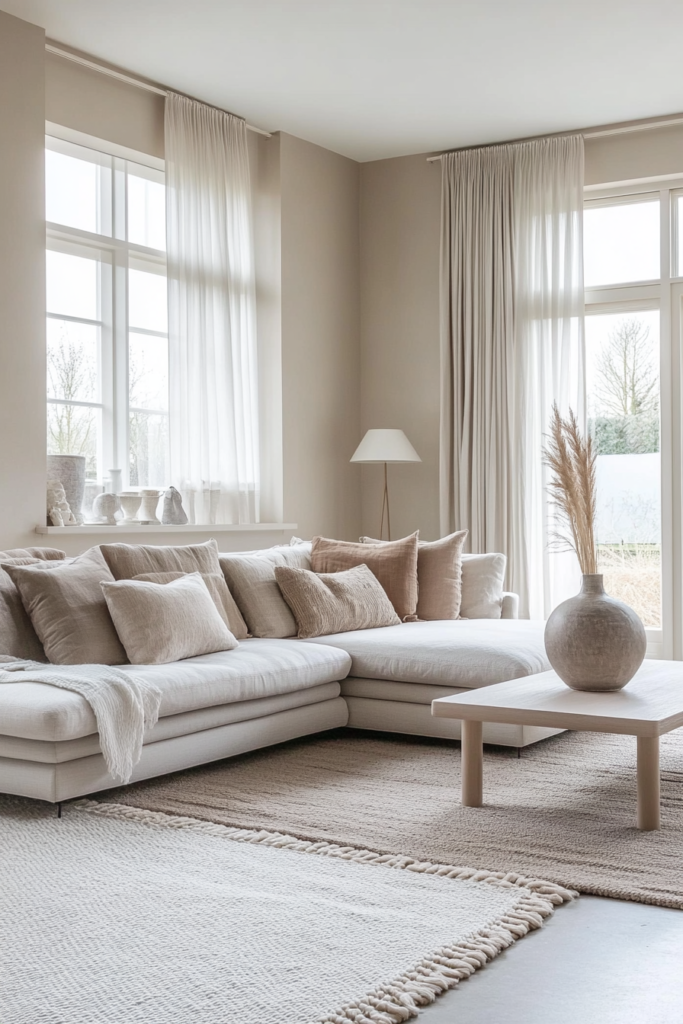
2. Opt for Functional Furniture
In minimalist living rooms, every piece of furniture should serve a clear purpose. Multi-functional pieces, like a sofa bed or a coffee table with hidden storage, help maintain a clutter-free environment.
Invest in furniture that has clean lines and simple designs. A low-profile, streamlined sofa will keep the room visually open, while a modern accent chair can add style without dominating the space.
Furniture in a minimalist living room needs to enhance the design without overwhelming the room, so choose items that are both practical and aesthetically pleasing.
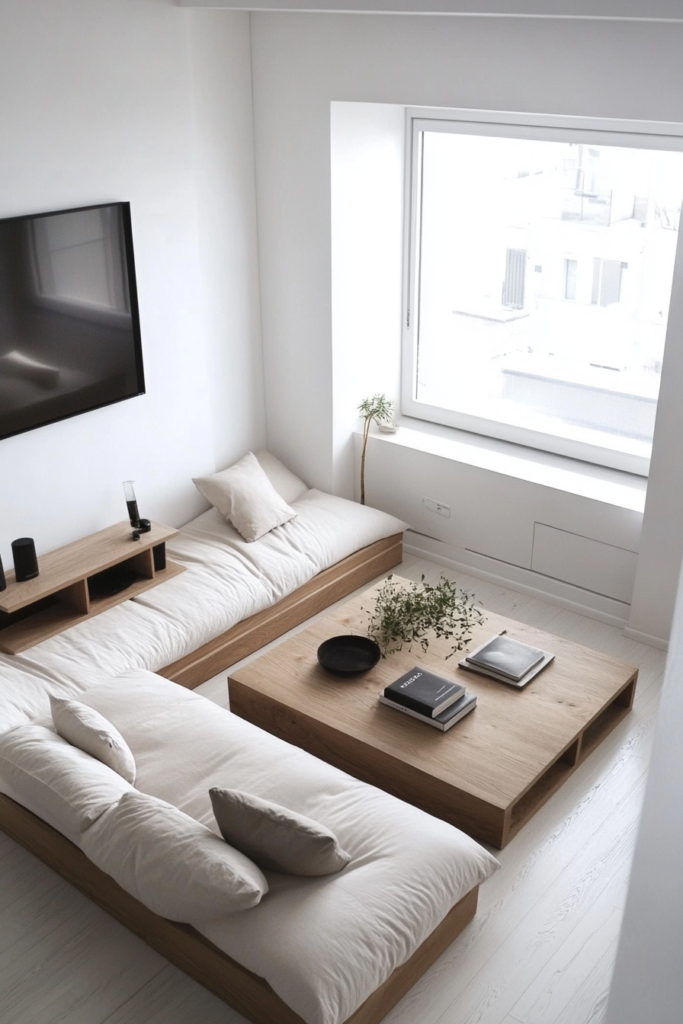
3. Focus on Lighting
Lighting plays an essential role in minimalist spaces. Natural light can fill the room with warmth, so sheer curtains or blinds are great options to allow sunlight in while keeping the space open and airy.
For artificial lighting, keep it simple with statement fixtures such as a pendant light or a floor lamp. These pieces can add both functionality and elegance without adding too much visual weight to the room.
Proper lighting creates the right mood and highlights the simplicity of minimalist design, making the room feel both spacious and inviting.

4. Add Greenery for a Touch of Life
A minimalist living room doesn’t have to feel sterile. Indoor plants bring life and texture to the space without overwhelming it. Opt for a large plant like a fiddle leaf fig or a snake plant for a bold but calming look.
Choose plants that fit the minimalist aesthetic—plants in simple pots or planters work best. These plants can also help purify the air and create a peaceful, natural environment in your living room.
The key is to keep the number of plants to a minimum, focusing on a few standout pieces that contribute to the overall simplicity of the room.
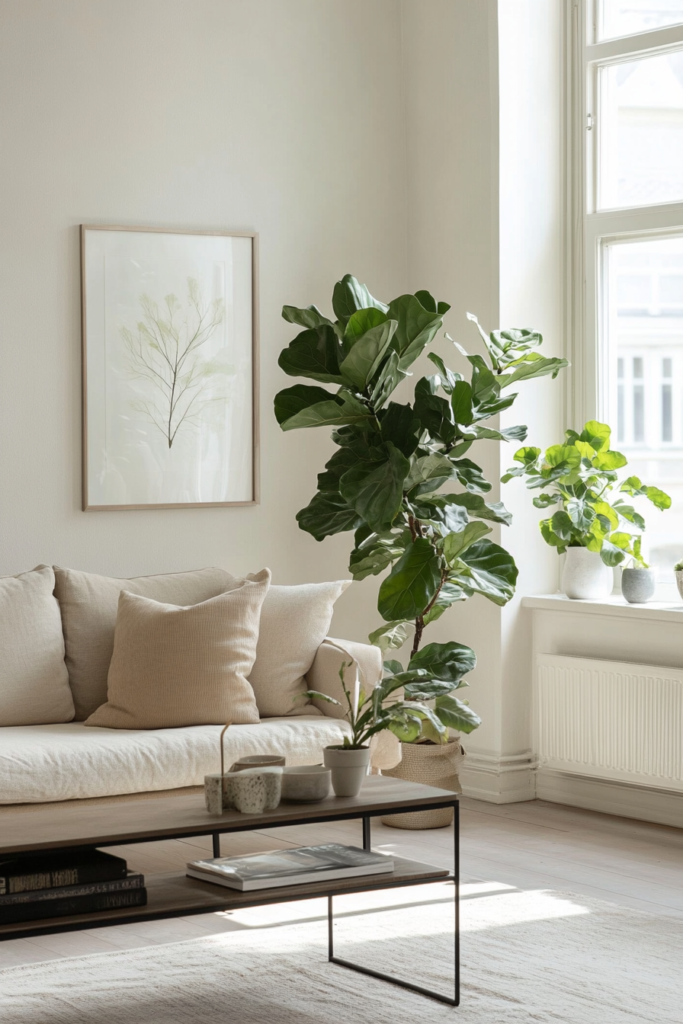
5. Keep Your Decor Simple
Minimalist decor focuses on clean, simple items that serve a purpose. Instead of overloading your living room with knick-knacks, choose one or two statement pieces that speak to your style.
Consider a single large artwork or a sleek sculpture to serve as the focal point of the room. Open shelving can display a few carefully selected objects, such as books or vases, without cluttering the space.
By reducing the number of decor items, you allow each piece to stand out, helping to create a calm and organized atmosphere.
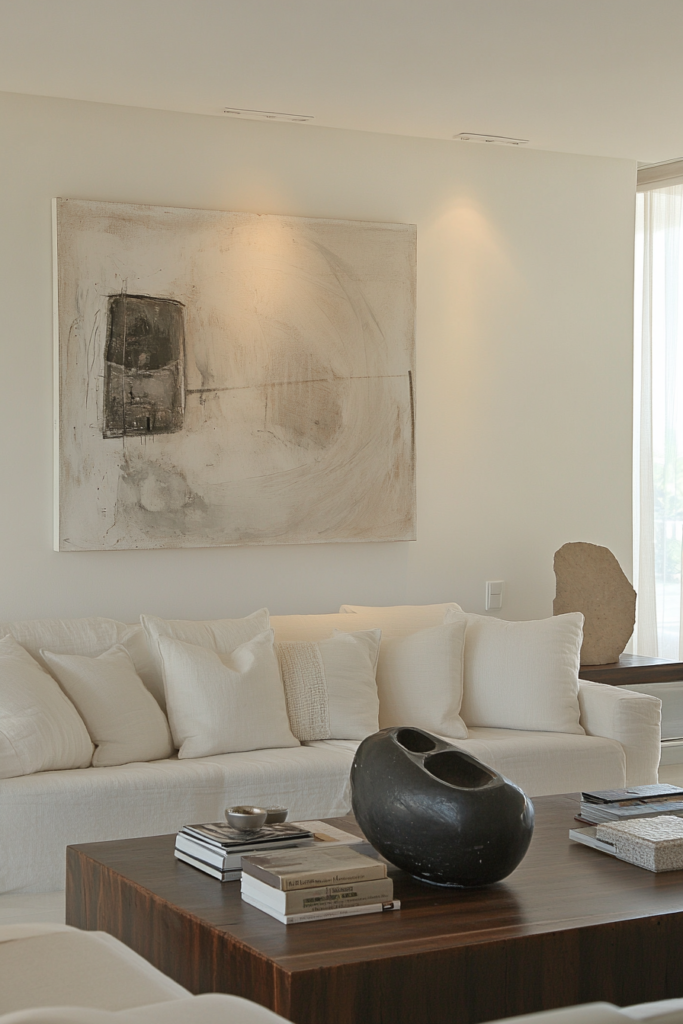
6. Use Natural Materials
When choosing furniture and decor, natural materials like wood, stone, and metal can bring warmth and texture to a minimalist living room. A wooden coffee table or a stone fireplace can create a sophisticated yet inviting atmosphere.
The use of natural materials also balances the clean lines of minimalist design. Mixing textures like a wool rug with leather furniture can add depth to the space without overcrowding it.
Natural materials provide visual interest while still maintaining the clean, simple aesthetic that is characteristic of minimalist interiors.
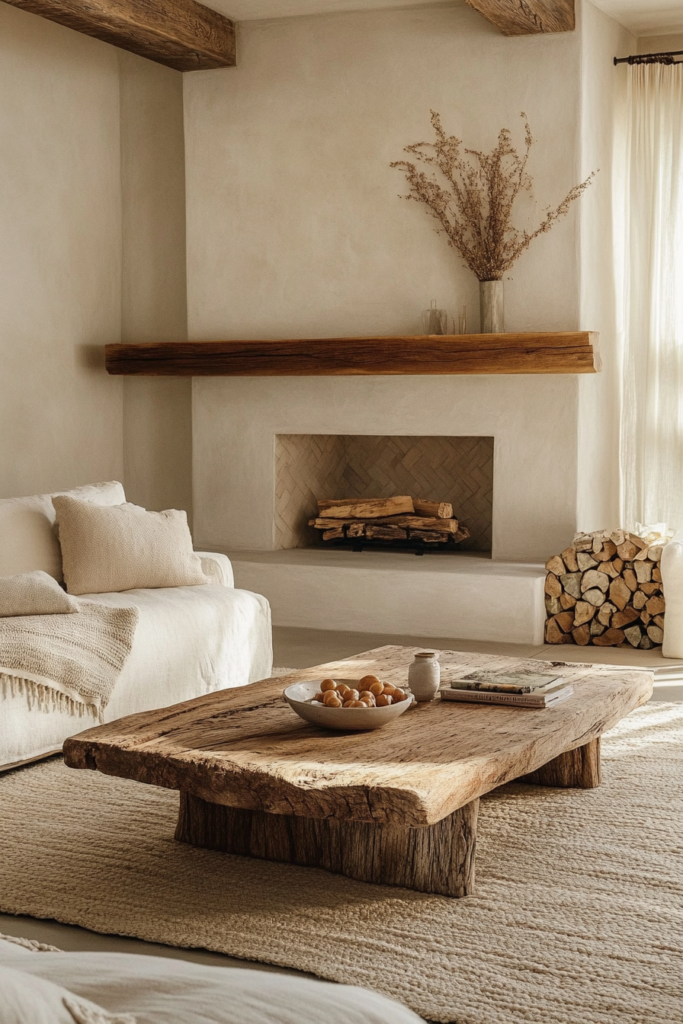
7. Invest in a Neutral Rug
A rug adds warmth and comfort to a minimalist living room. Choose a neutral-colored rug in shades like beige, gray, or white to complement the rest of the decor without drawing too much attention.
If you prefer some pattern, go for subtle designs like geometric patterns or thin stripes. These types of rugs can add texture and interest to the room while staying true to the minimalist aesthetic.
A neutral rug helps tie the space together, creating a cozy and inviting environment without overpowering the room.
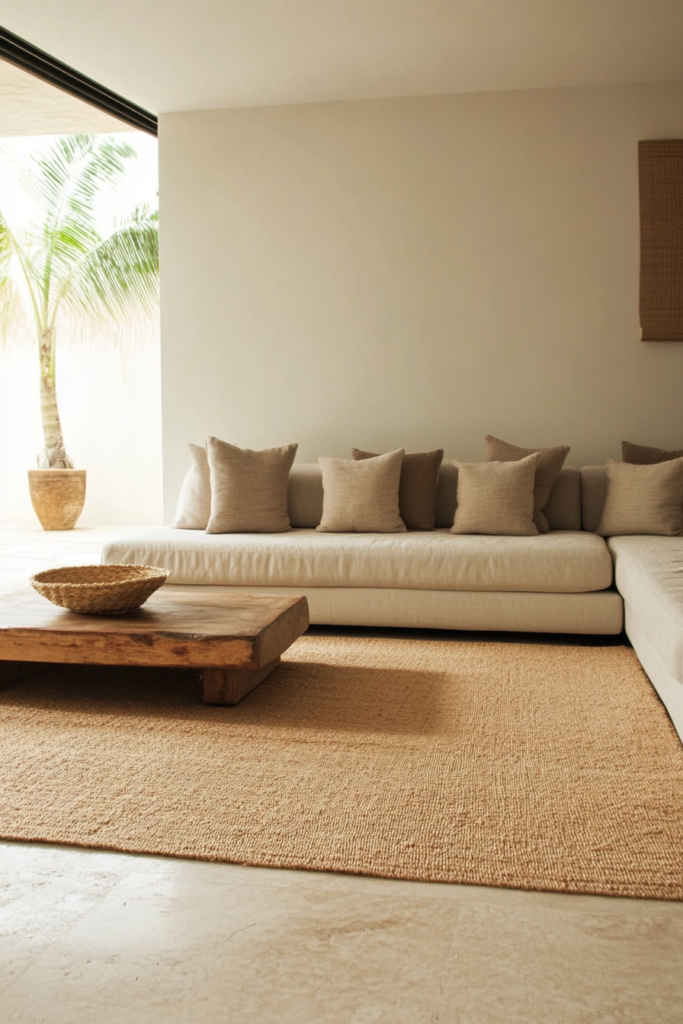
8. Embrace Open Space
One of the key aspects of minimalist living rooms is open space. Rather than filling the room with too much furniture or decor, embrace the negative space to make the room feel larger and more serene.
Leave some areas of the floor empty to encourage a sense of openness. The goal is to make the room feel airy and calm, which also promotes relaxation and comfort.
Open spaces contribute to a peaceful environment and allow you to enjoy the simplicity of the room without feeling overwhelmed.
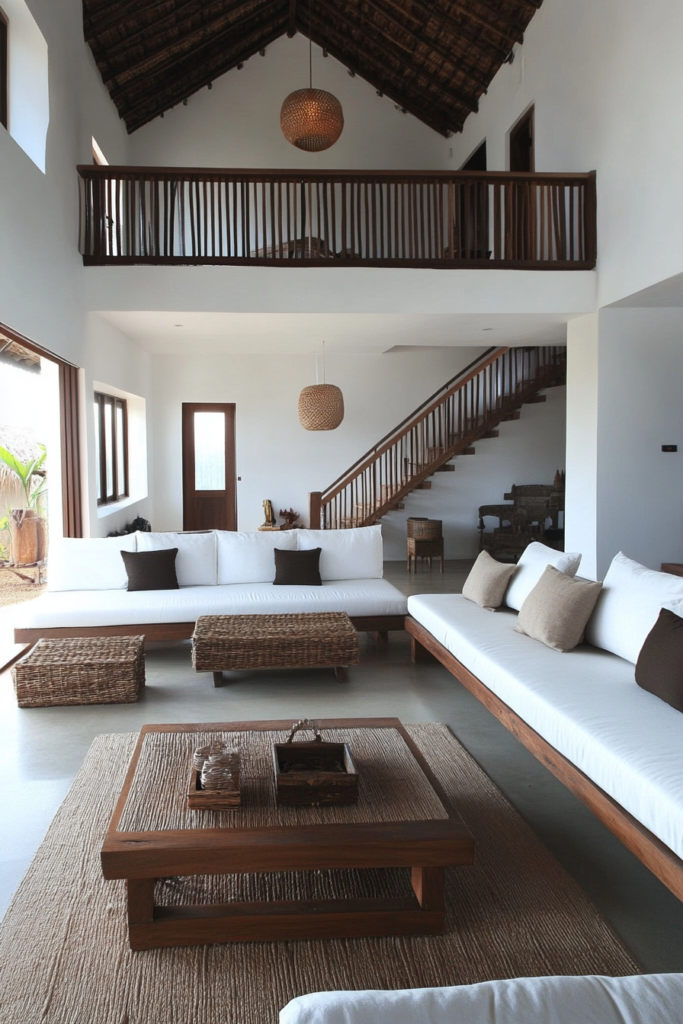
9. Choose the Right Wall Art
In minimalist living rooms, wall art should be impactful but not overwhelming. Opt for a single large piece of artwork or a black-and-white photograph to create a focal point in the room.
Avoid cluttering the walls with too many smaller pieces. A large, bold piece of art will help set the tone for the room while complementing the minimalist design.
When choosing artwork, consider the size and scale to ensure it enhances the space without overpowering it.
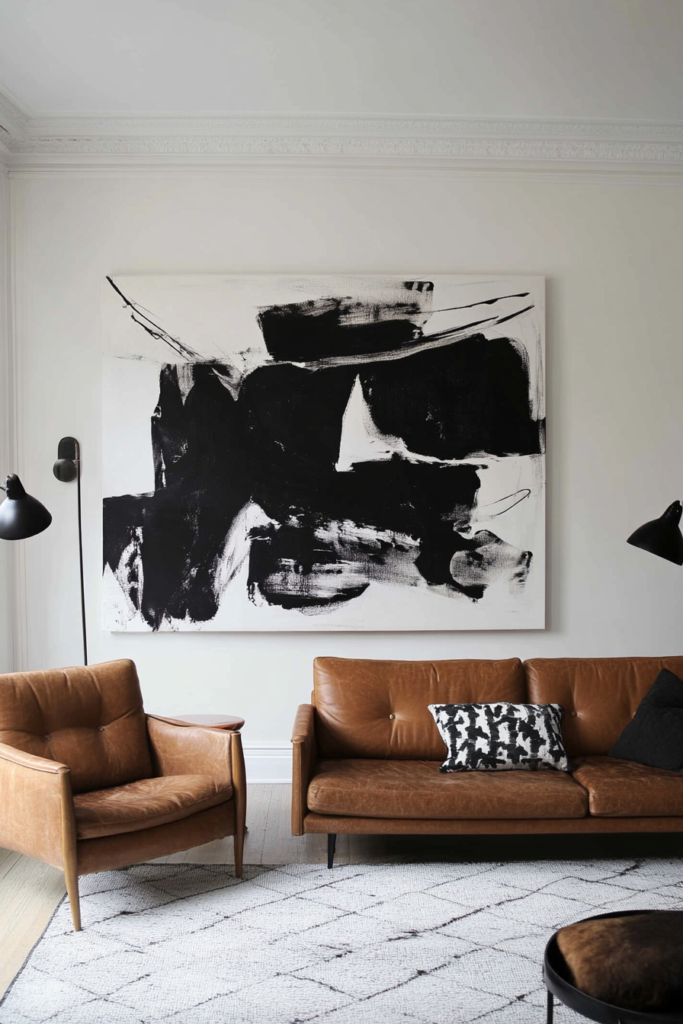
10. Go for a Neutral Sofa
The sofa is often the centerpiece of the living room, so choosing one in a neutral color is important for a minimalist design. A light gray or beige sofa will blend seamlessly with the rest of the room, creating a calm and inviting atmosphere.
Look for a low-profile, simple design that doesn’t dominate the room. Avoid heavy, ornate sofas that can make the space feel cluttered or visually heavy.
A minimalist sofa contributes to the overall clean and open vibe of the room, making it feel spacious and uncluttered.
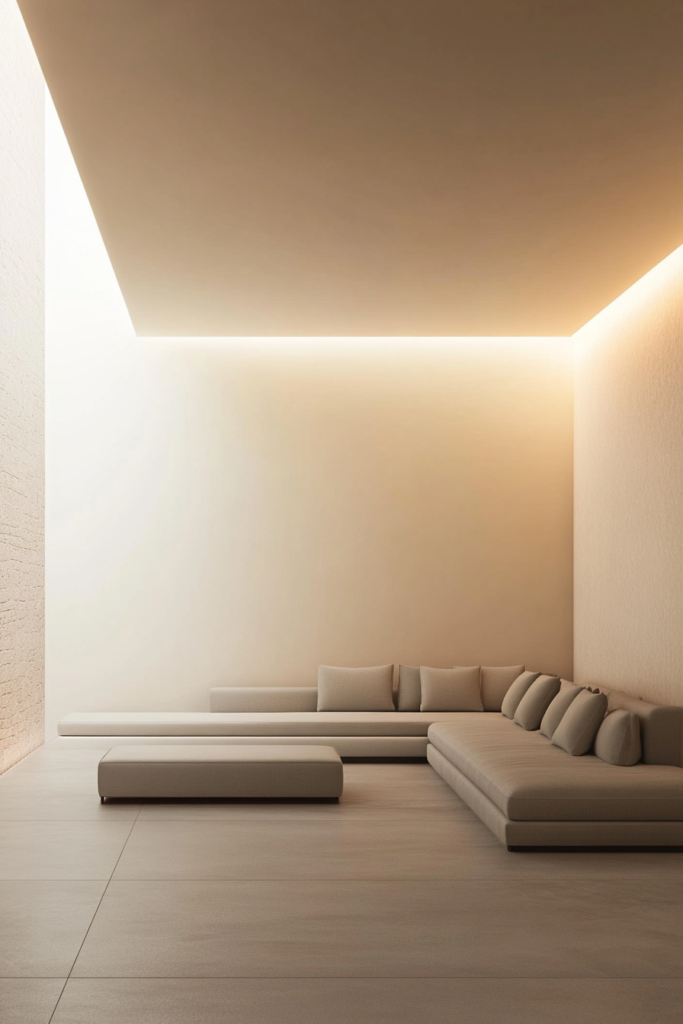
11. Keep the Floor Plan Open
An open floor plan is essential for achieving a minimalist living room. Arrange your furniture to allow for easy movement, avoiding the temptation to overcrowd the space.
Instead of pushing everything against the walls, try placing the furniture in a way that creates a natural flow. This encourages interaction and keeps the room feeling open.
An open floor plan makes the room feel larger and promotes a sense of connection and ease.
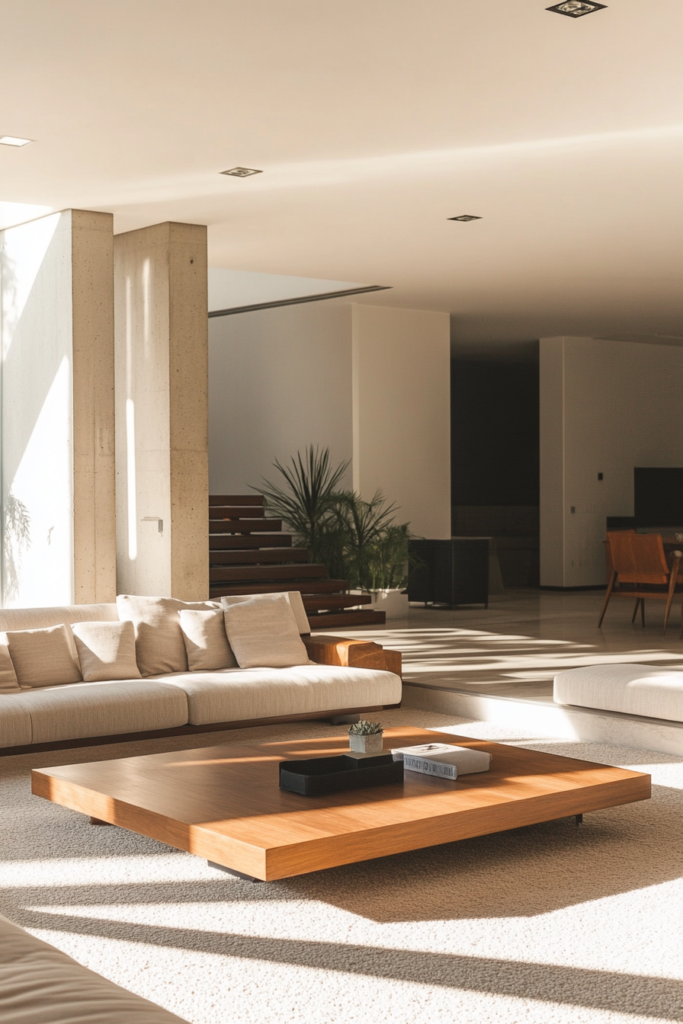
12. Opt for Sleek Storage Solutions
In minimalist spaces, storage plays a crucial role. Invest in sleek, functional storage solutions that allow you to keep your belongings organized and out of sight.
A media console with hidden drawers or a coffee table with storage compartments are excellent choices for a minimalist living room. These pieces help maintain the clean, organized aesthetic while keeping the room clutter-free.
Choose storage options that seamlessly blend into the space, contributing to the minimalist design without drawing attention.
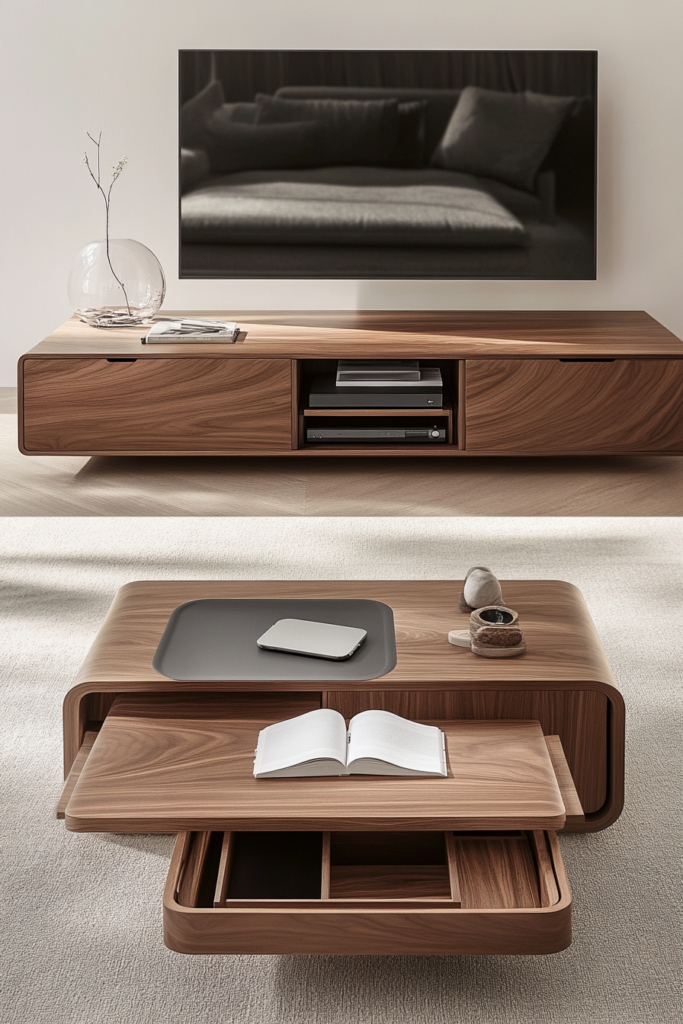
13. Keep the Accessories to a Minimum
Accessories should be simple and purposeful in a minimalist living room. A few well-placed decorative pillows or a small clock are all you need to add style without overcrowding the space.
Avoid cluttering every surface with accessories. Instead, focus on quality over quantity to create a balanced, serene environment.
By keeping accessories to a minimum, you allow the space to feel more open and organized, reinforcing the minimalist aesthetic.
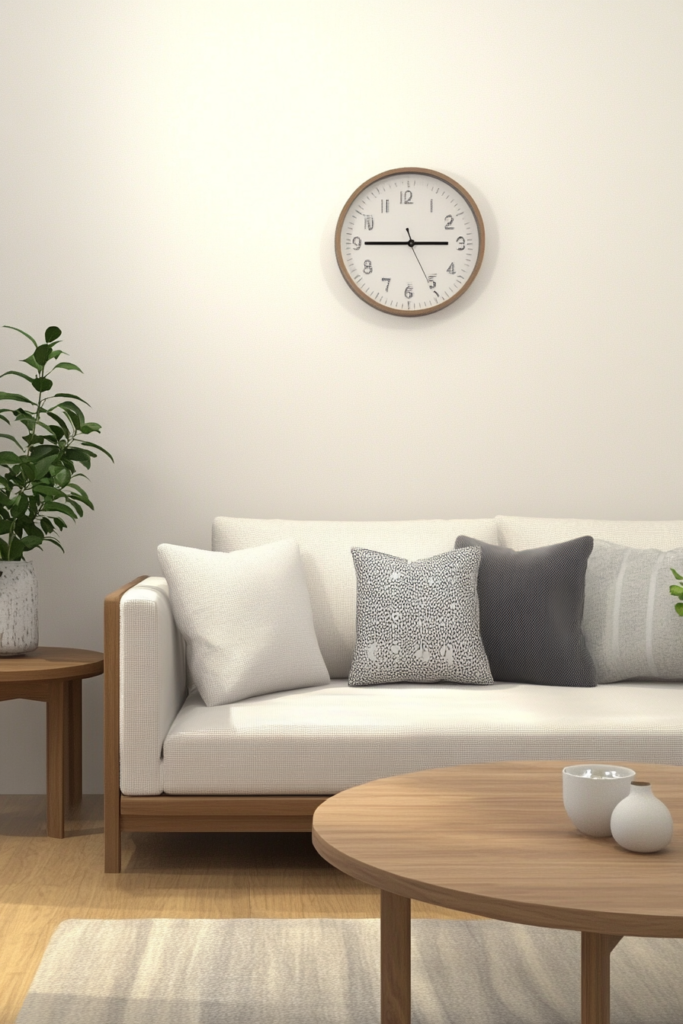
14. Add Texture with Throw Blankets
Though minimalism focuses on simplicity, texture is still an important part of the design. Adding a soft throw blanket on the sofa can bring warmth and comfort to the space without cluttering it.
Choose throws in neutral colors or subtle patterns to complement the rest of the room. A wool or cotton throw adds a cozy, luxurious feel without detracting from the minimalist vibe.
Throw blankets can make the room feel inviting and comfortable, perfect for a minimalist space that still feels like home.
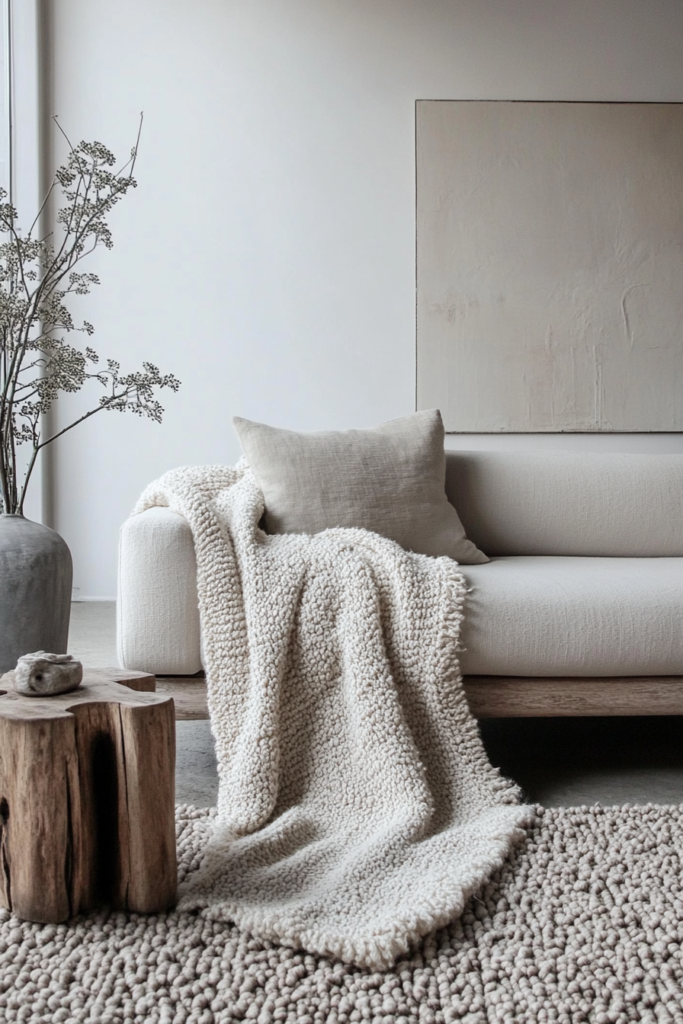
15. Invest in Minimalist Lighting Fixtures
In a minimalist living room, lighting should be sleek and functional. Choose lighting fixtures with clean, modern designs, such as a simple pendant light or a floor lamp with a sleek design.
These fixtures should complement the minimalist style without overwhelming the space. Opt for finishes like matte black or brushed brass for a sophisticated, understated look.
Lighting is essential for creating the right mood and highlighting the simplicity of the design.
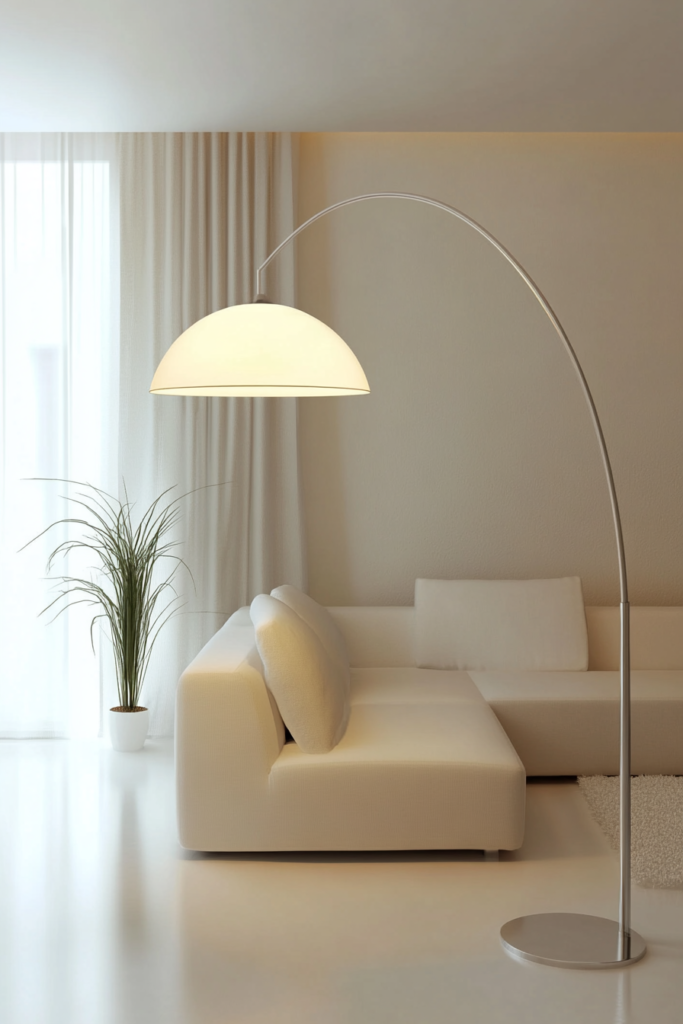
16. Keep the Walls Uncluttered
To maintain a minimalist aesthetic, keep the walls uncluttered. Rather than covering the walls with excessive artwork or shelving, leave them bare or choose one or two focal pieces.
A large mirror or a single piece of artwork can act as a statement without making the room feel busy. Keep the focus on clean lines and simplicity.
Uncluttered walls create a sense of space and calm, helping to enhance the minimalist design.
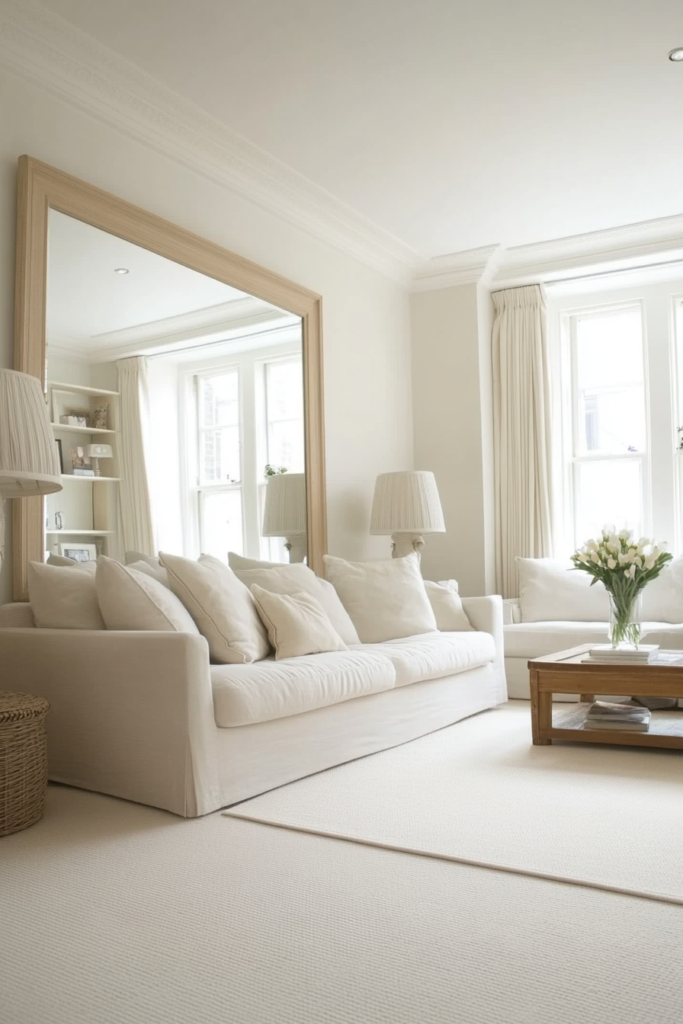
17. Focus on Simple, Functional Decor
Decor should always serve a functional purpose in a minimalist living room. A stylish tray on the coffee table can hold your remote controls, while a decorative bowl can store keys or small items.
Keep the decor simple but purposeful, ensuring each item contributes to the overall harmony of the room. Avoid unnecessary items that add clutter to the space.
Minimalist decor emphasizes function while still being stylish, ensuring that the space remains organized and serene.
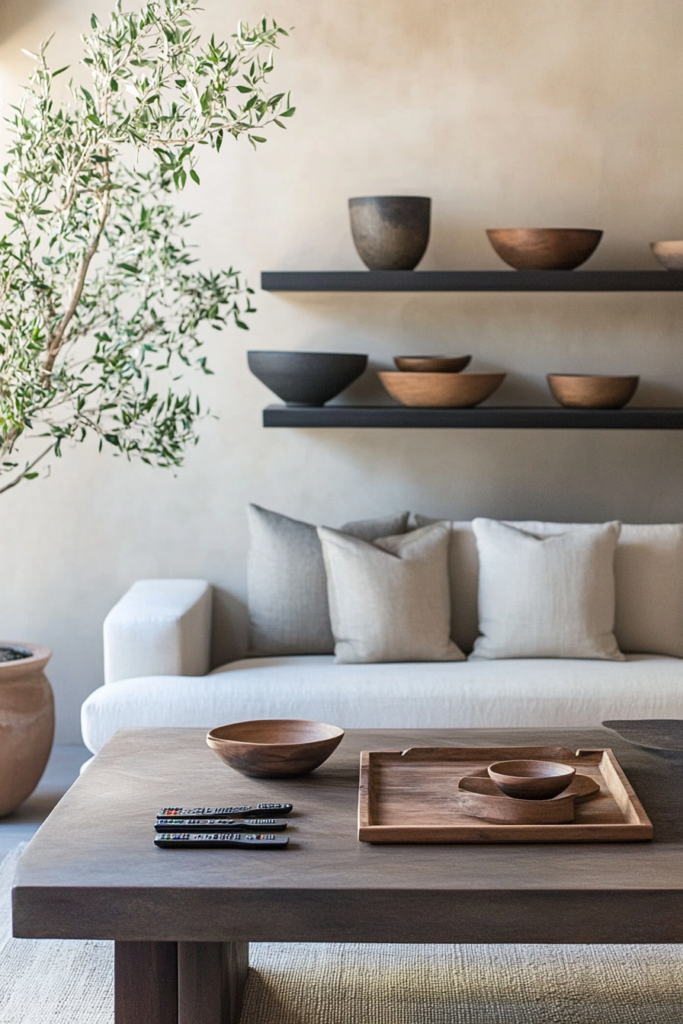
18. Create a Relaxing Atmosphere with Candles
Candles can add a touch of warmth and relaxation to a minimalist living room. A few high-quality candles in neutral tones are all you need to create a cozy, inviting ambiance.
Opt for simple candle holders that match the minimalist aesthetic, and place them strategically around the room to create a calming atmosphere.
The soft flicker of candlelight can make the room feel cozy and inviting without overpowering the minimalist design.
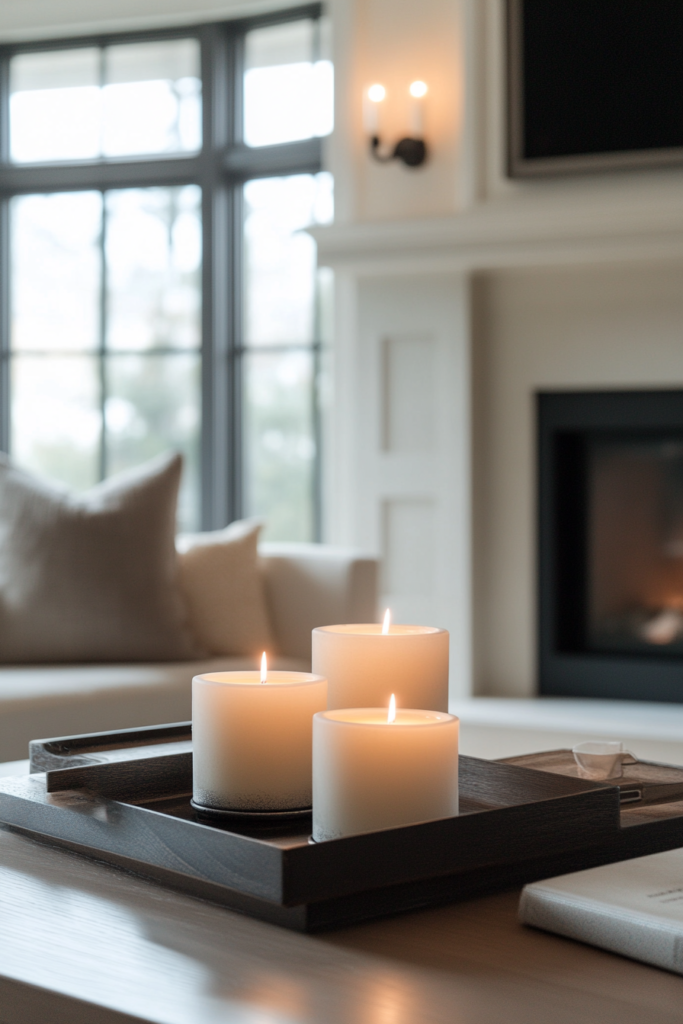
19. Embrace Open Shelving
Open shelving allows you to display a few select items while maintaining a minimalist aesthetic. Use shelves to hold books, a vase, or art pieces—but keep the number of items to a minimum.
The key to successful open shelving is keeping it tidy and organized. Don’t overcrowd the shelves; only display items that contribute to the overall design.
Open shelving is an excellent way to maintain the minimalist aesthetic while still offering some functional storage.
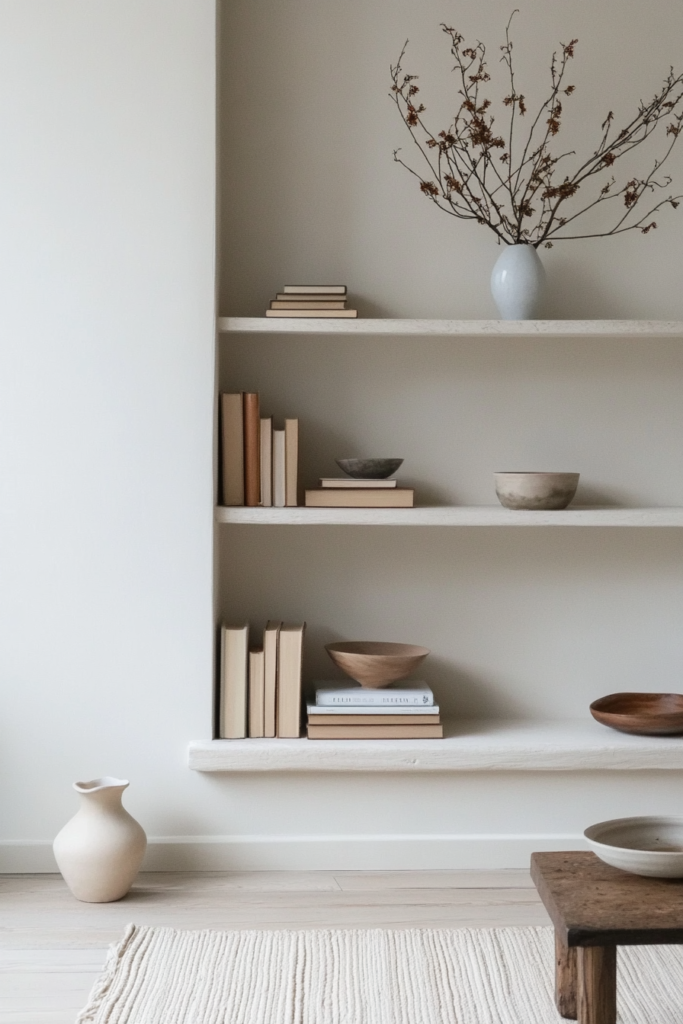
20. Choose a Statement Piece of Furniture
A statement piece can elevate a minimalist living room. Look for a unique chair or a bold coffee table that adds personality without overwhelming the space.
A statement piece should stand out but remain simple in design. Choose one or two pieces that draw attention without detracting from the room’s minimalist feel.
A statement piece adds character to the space while still maintaining the overall simplicity of the design.
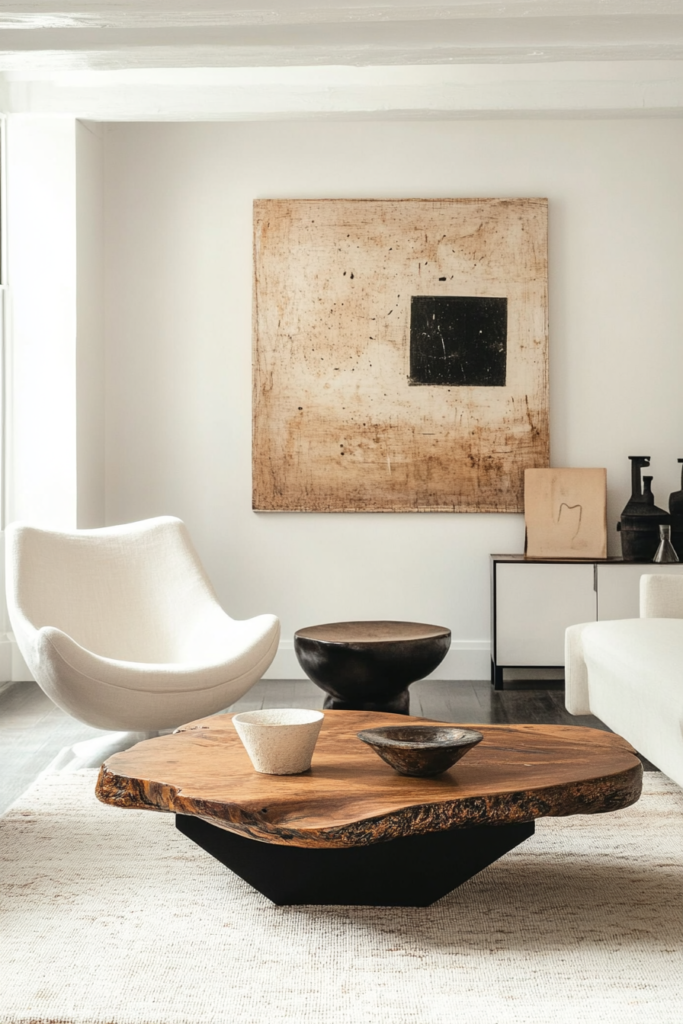
21. Keep the Entryway Simple
The entryway is often the first part of the living room that guests see, so it’s important to keep it simple and clutter-free. A minimalist console table or a sleek bench for seating will keep the space tidy and functional.
Add a mirror or a few decorative items like plants or candles, but avoid overcrowding the entryway.
A simple entryway sets the tone for the minimalist living room, creating an organized, welcoming environment.
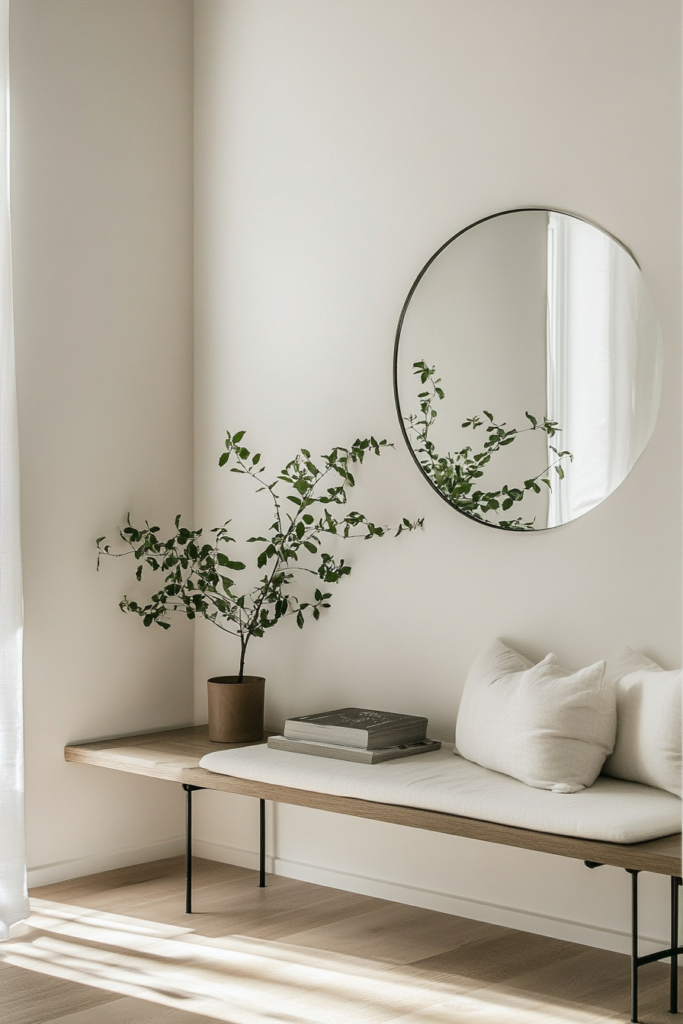
Conclusion: Simplify Your Space
By incorporating these 21 minimalist living room ideas, you can create a space that feels clean, calm, and organized. Minimalism is all about keeping things simple, choosing quality over quantity, and ensuring that every item serves a purpose.
Transform your living room into a tranquil retreat that promotes relaxation and serenity by embracing minimalist principles. Whether you’re redesigning or starting fresh, these ideas will help you achieve the perfect balance between functionality and beauty.

